Neku Sakuraba's Boots - Part 1
The World Ends With You
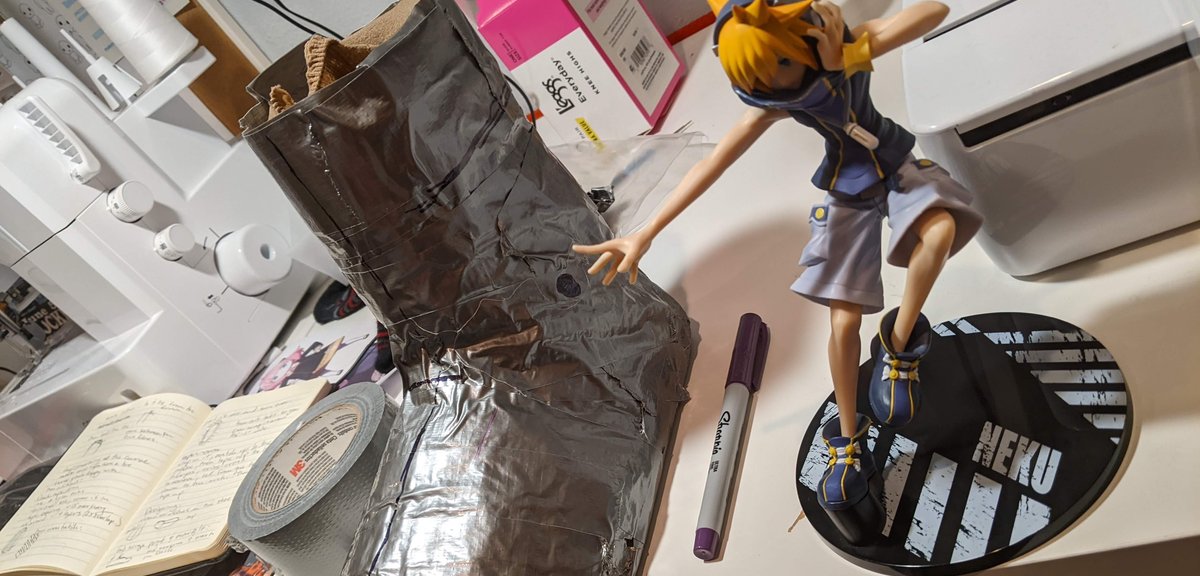
I first played The World Ends With You back in 2008 and it instantly became my favorite video game. I loved everything about it - the gameplay, the setting of Shibuya, the graffiti art style, the music and of course the anti-social protag Neku Sakuraba. As I got more into making cosplay over the years, Neku's always been on my list but I never wanted to make it unless I thought I could tackle his shoes properly.
Patterning
I know nothing about how to make shoes, but my wife took a shoe making class and made a couple of boots and sandals now, so I had someone to guide me through the process - starting with patterning! One way it to start with a Last, which is a form of a foot in the size that you want. But I didn't have one of those, but what I did have was my own foot! The advantage of using your own foot of course is you don't have to worry about what size last to get, because (if you do it right), it'll be an exact fit!
So we started by making a "mold" of my foot out of duct-tape. First with some poster board, traced and cut out the shape of the foot for the sole, then cover the poster board in strips of duct tape that go several inches past the edge. Slip a pantyhose liner over your foot. If you're just making a regular boot, just the pantyhose by itself is probably fine. But Neku's boots, being a video game character, are a bit over-sized. No where near as bad as Sora (Kingdom Hearts), but certainly in that direction. So I stuffed some stuffing in the liner to sorta get some of the shape I was looking for. Don't go overboard here - you want the shoes to stay on your feet, but some extra around the toe/front.
Now step on the poster-board sole and carefully take the ends of those strips of duct tape and bring them up to start covering the foot. Once you've got the bottom, then start going to town covering the foot, ankle and however far up the leg you think looks right. Before you carefully cut your foot out, mark some spots on the mold - where your ankle is, the midline of your foot, where you think the straps will go, etc. Cut down the back centerline of the duct tape, just enough to get my foot out. The end result looked something like this:
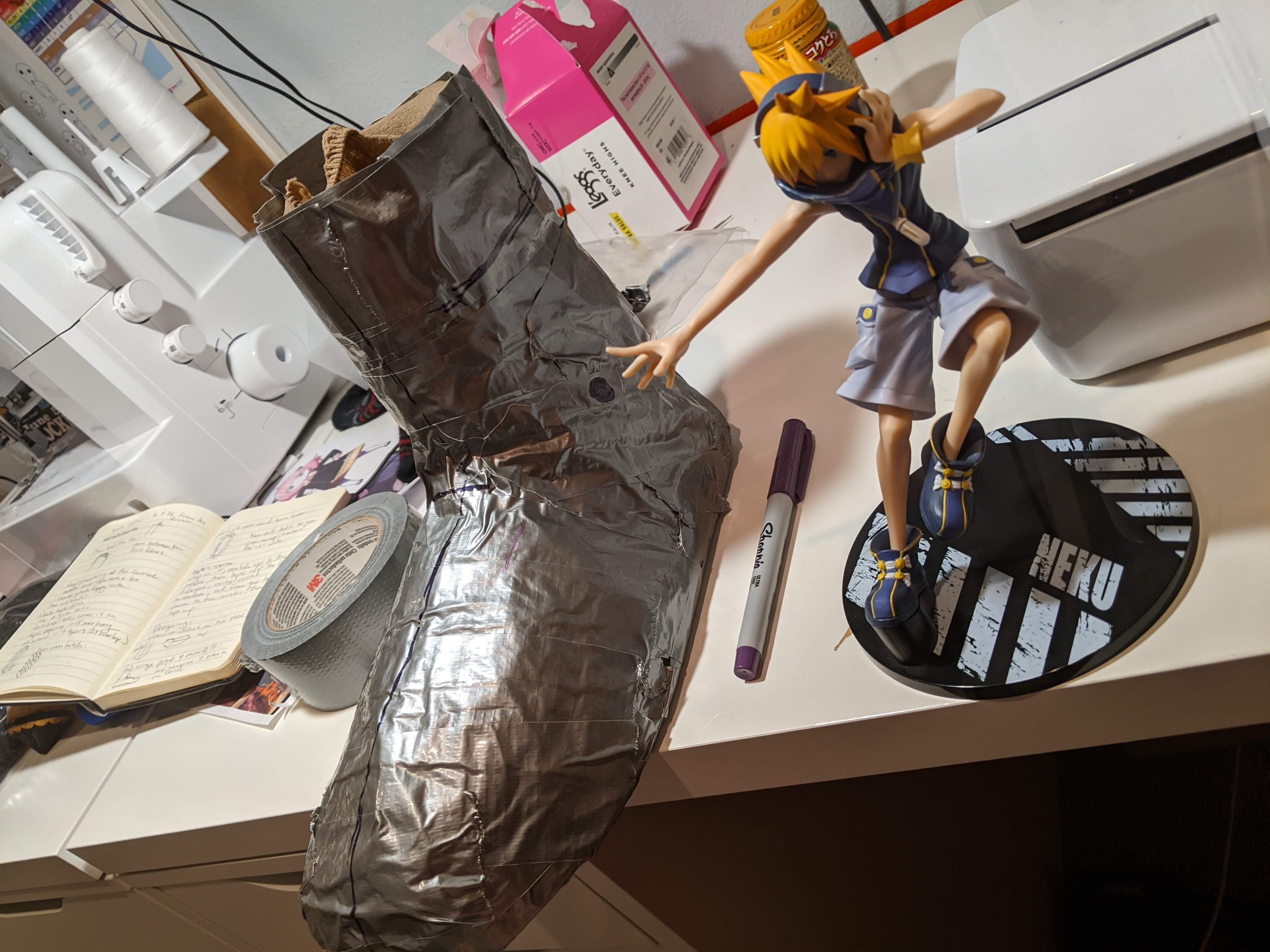
Before you start cutting, you'll want to make some marks along the perimeter of the bottom of the shoe, just long enough to cover the sole and the upper. Be very precise and mark every 1/4". Every 5th mark, use a different color or make it very bold. You'll need this marks to make sure the upper lines up exactly with the midsole during your assembly.
Next, carefully (and i'll probably use that word a lot) start cutting up the mold. Cut out the sole exactly where the poster-board ends. Cut straight down the back of the shoe where you'll want the back seam to be. Then the medial (inside) and lateral (outside) uppers and the tongue. In this case, since the purple tongue of Neku's shoes extend all the way down the toe to the midsole, I think that makes this construction a little easier since you don't have to worry about a toe or heal cap.
Peel away the pantyhose and place the duct-tape pieces on poster-board, carefully flattening them out as much as you can. You can then extend the pattern as you think it should be. You'll need to extend the top part of the tongue where it should go past the upper. Also measure out a seam allowance along the sole and bottom pieces of the upper. Transfer all the markings onto the seam allowance. Should look something like this:
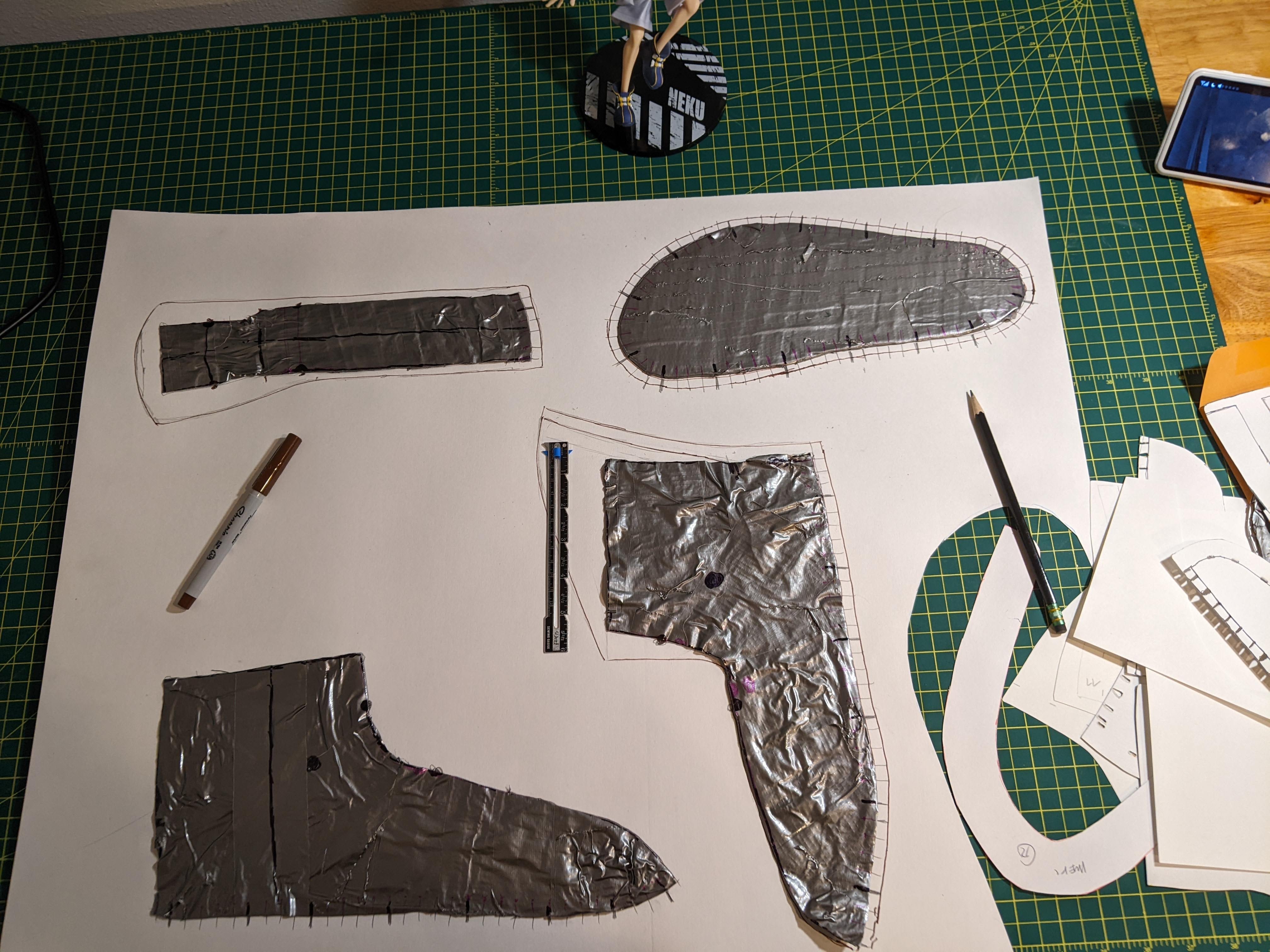
Cut out all the pattern pieces. If your feet are both roughly the same size, you can use the same pattern for both feet. Just make sure you label the sides correctly, along with what side of the foot (medial or lateral). In my patterns you'll see LM, LL, RM, RL markings. If you've got a pattern notching tool, notch out every line you marked for those registration marks on the seam allowance. Where you marked those bold marks every 5 marks, punch a small hole instead of a notch to differentiate. This will make transferring the marks to the leather much more accurate (remember, you want them to be precise).
Now you can transfer the pattern to the leather and start cutting.

Dye Job
When I went leather shopping, I couldn't really find the right colors in the right type of leather I was looking for, so I opted to go the dye/paint route. If I ever remake these, I'll probably mail-order something that's pre-dyed.
I couldn't fine a dye in the exact shade of blue/purple for the tongue (I think it's a shade of indigo), so tried many (many) combinations of mixing a blue and purple leather dye I did find. A lot of test pieces were sacrificed to find the right mix.
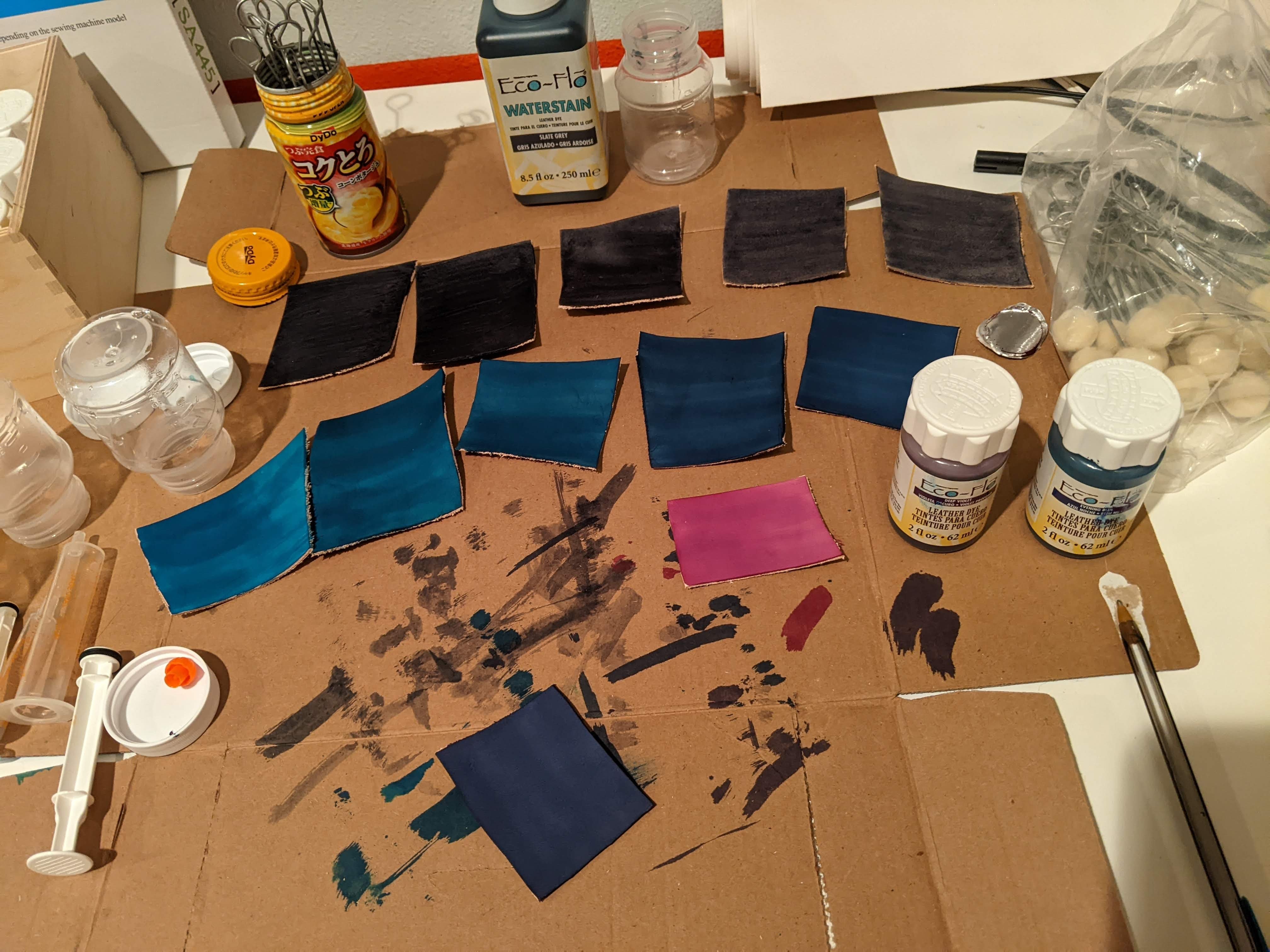
For the gray part of the upper, I initially tried a dye I found in slate grey but was not happy with the results. It couldn't get it not to be streaky, and since it's water based the leather got really stiff. After a number of tries, I wound up going with a leather paint. It actually came out better than I was expecting, but I would still rather go with something colored "professionally" by a factory.
I did find some nice thin/soft yellow leather that I could use for the piping, so didn't need to color that. Strips were cut out for the piping.
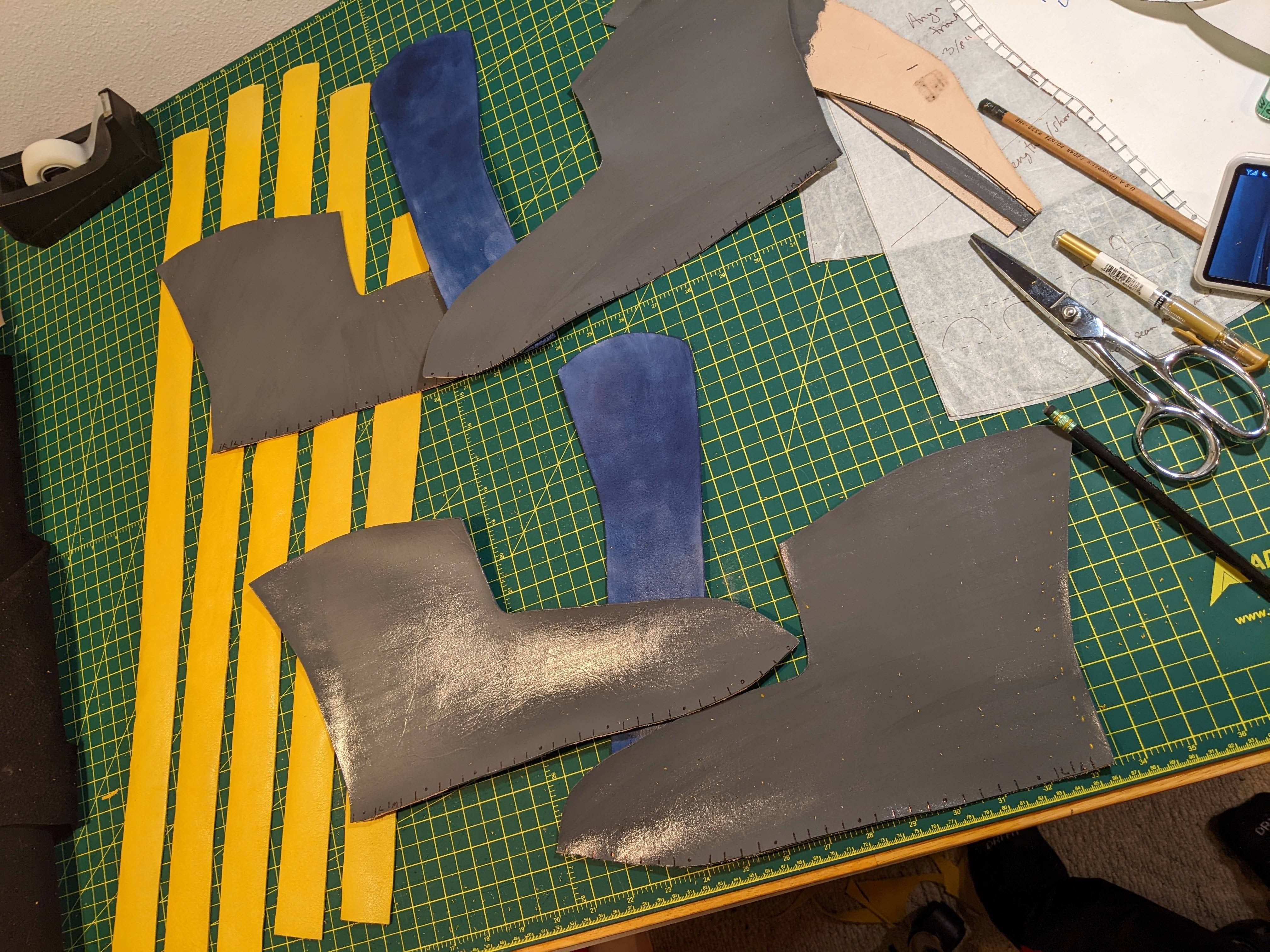
Upper Assembly
Leather is pretty thick, so if you want to attach two pieces and don't want the end result to be too thick, you need to trim some of the leather away to thin it out. You do that with a skiver tool that helps you just shave off a little bit (or a lot of bit if you're not careful). The plan was to fold the yellow piping before attaching it, so all that needed to be skived, along with the backs of the left and right upper pieces where the attach.
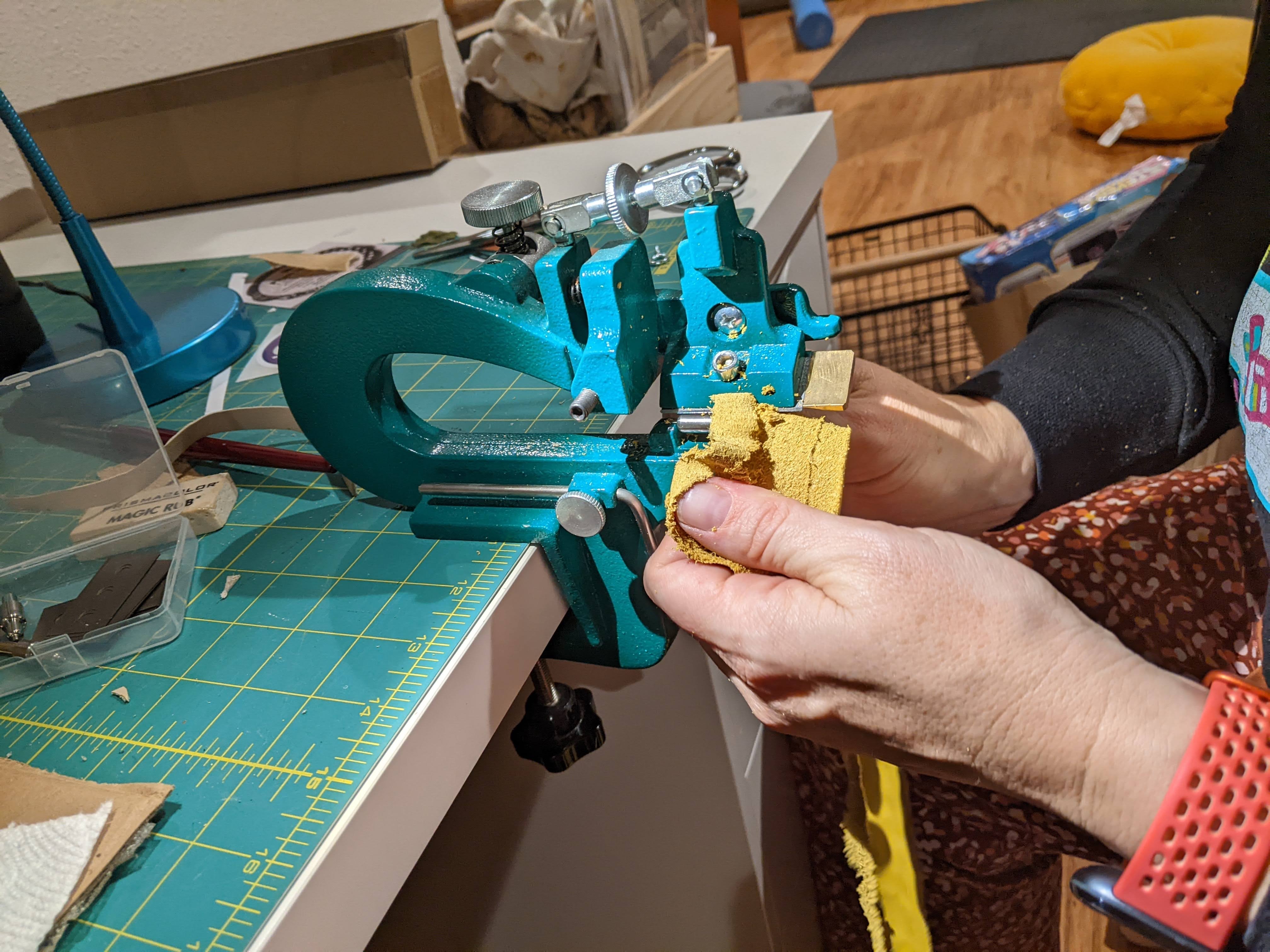
Now time to bring out the Barge (contact cement). If you're not familar with this type of glue, you brush it on both sides of what you want to attach, wait 5 min or so for it to dry a bit and get "tacky" before attaching the pieces together.
The backs were skived and glued:
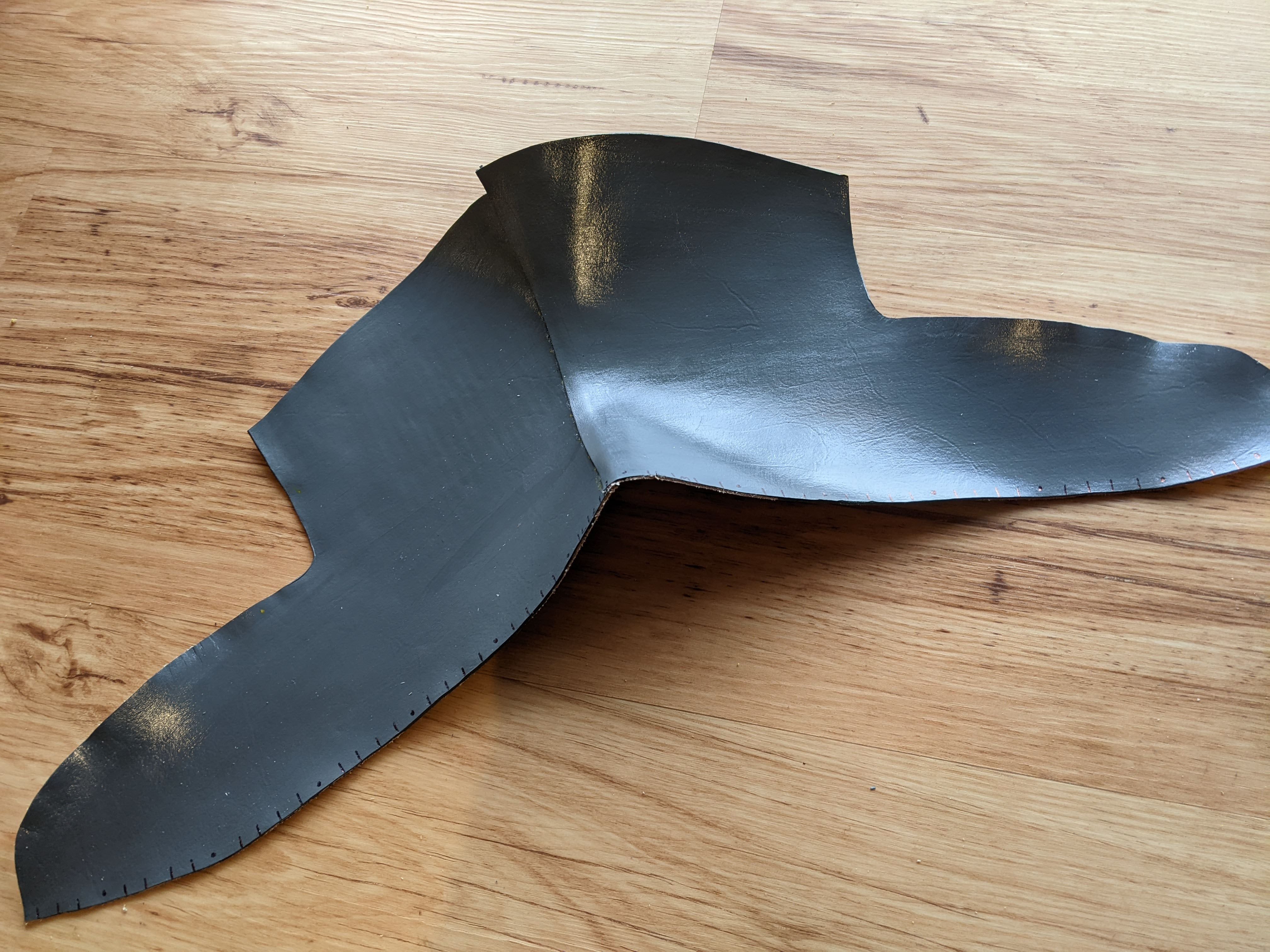
The piping was skived, folded/glued over before attaching to the upper with more glue. Notches were cut out where needed to help go around the curves.
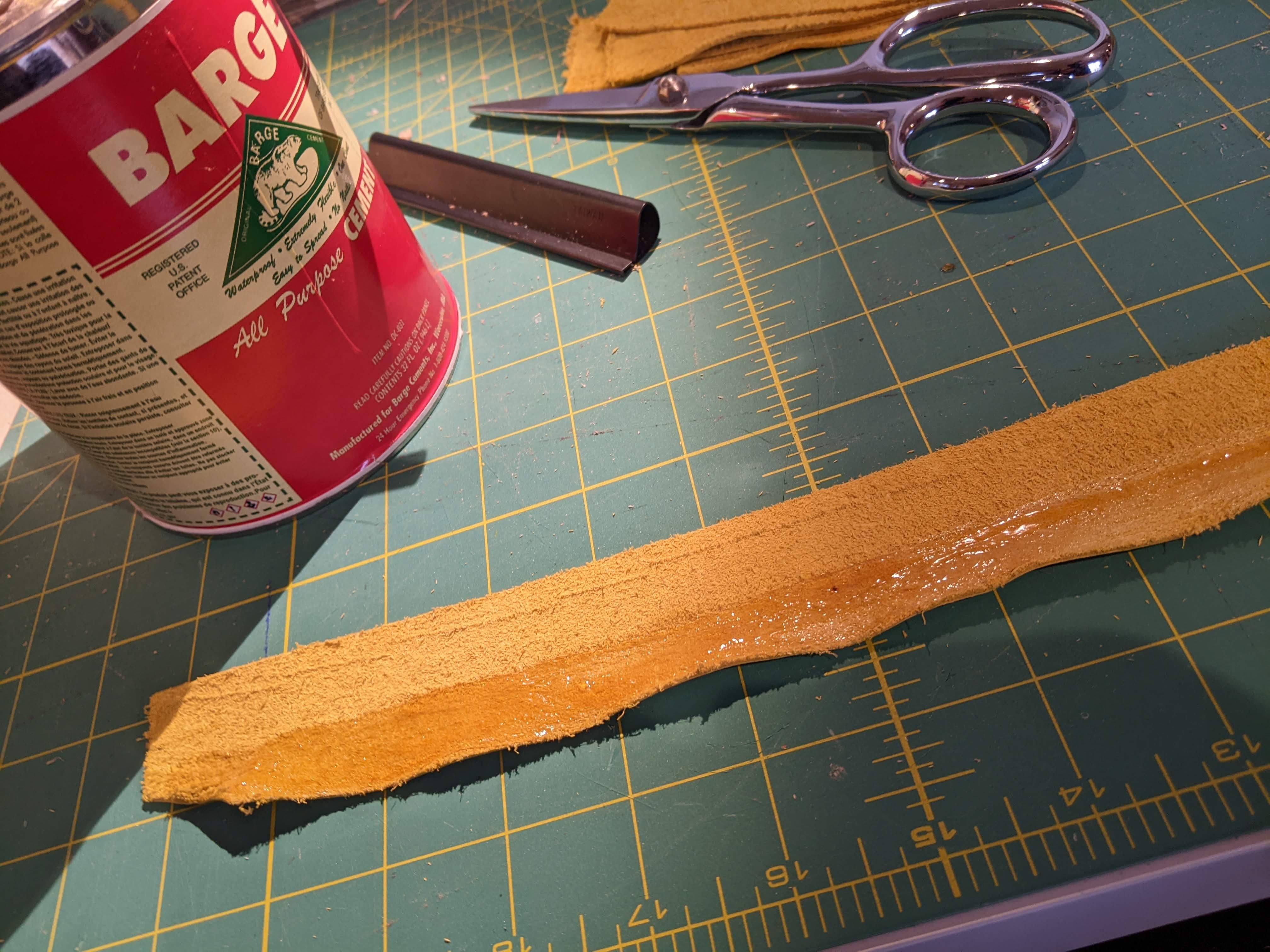
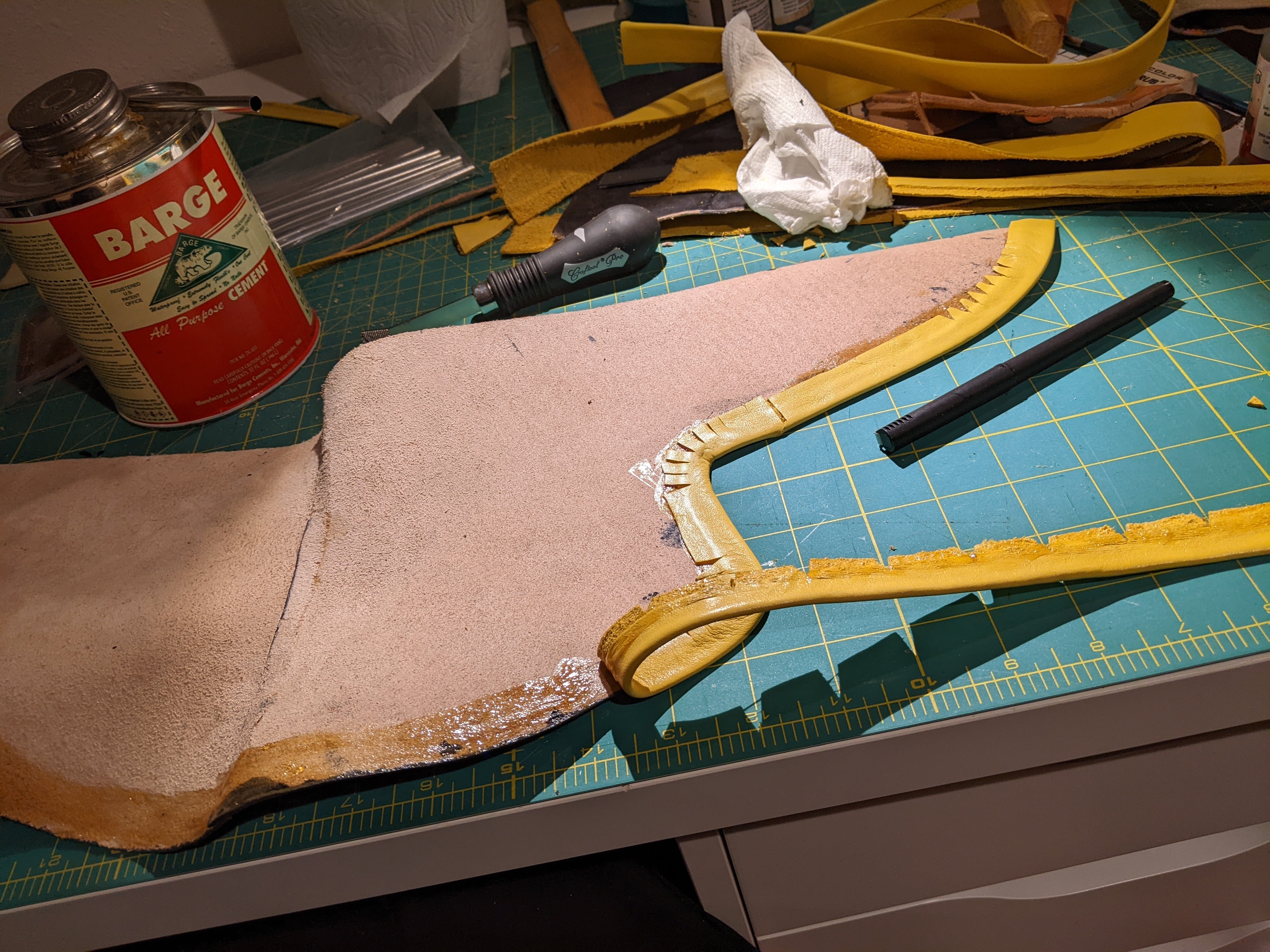
Another strip of leather was cut and painted and stitched to go over the back seam of the uppers. At this point, I've got a left and right upper that looks like this:
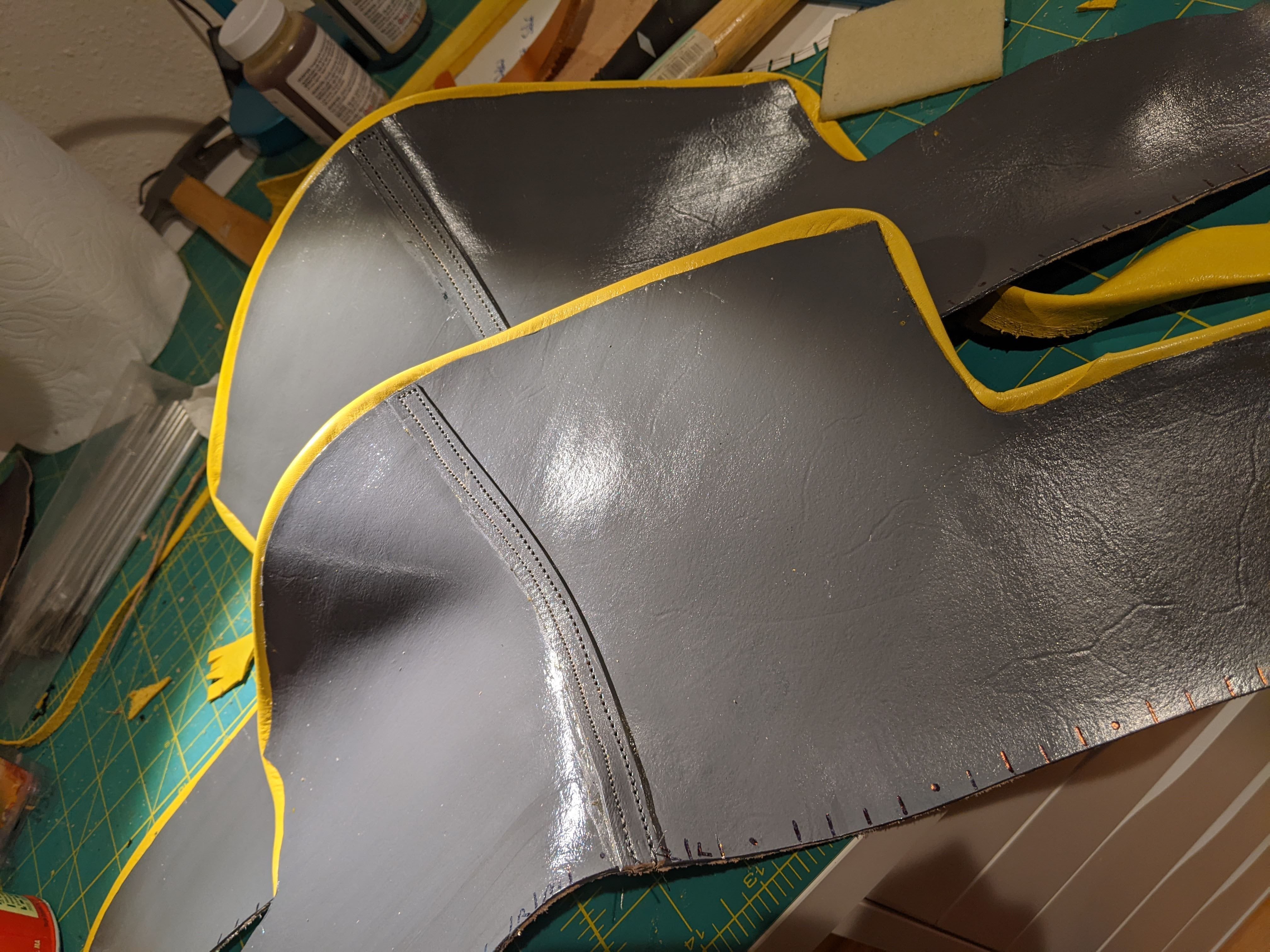
Time to attach the tongue to the rest of the upper. Skived and glued, and then stitched.
The machine we have for leather isn't the greatest, so the stitching is a little sloppier than I would have liked, but it's not that noticable.


We had some black suede fabric on hand, so cut some pieces to use as a liner for the medial and lateral sides of the upper. Just enough to cover up the top half of the shoe. This was glued in place and then a stich was run all long the outside edge (everywhere the yellow piping is).
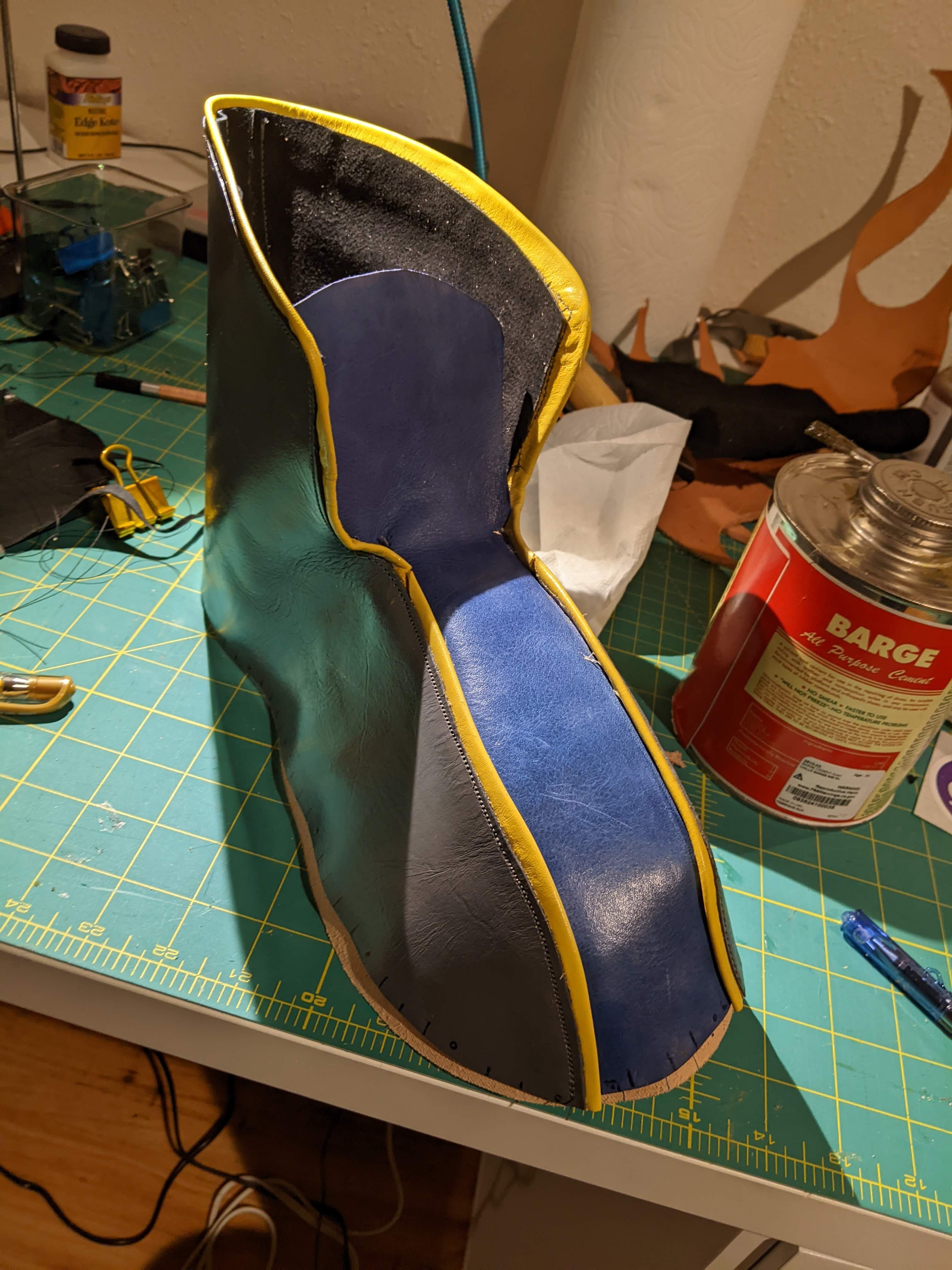
At this point, it's starting to take the shape of the shoe and I'm pretty happy with how things are looking.
Read on for Part 2 where we'll attach the midsole and the outer sole!
You Might Also Like
Daisuke/Davis Shoes
Nov. 29, 2022
Lann - World of Final Fantasy
Nov. 29, 2022
Neku Hoodie
Nov. 29, 2022



